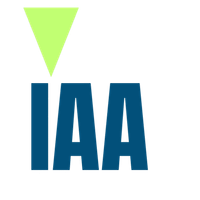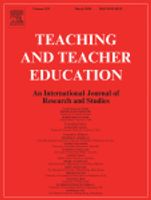Explore web search results related to this domain and discover relevant information.
Session 5 - Determining Your Cost of Capital with Pepperdine Data & Conclusion of Case Study will summarize the costs of each of the major capital types and show participants hot to create a capital structure that minimizes cost of capital and maximizes business value. This session will also teach ...
Session 5 - Determining Your Cost of Capital with Pepperdine Data & Conclusion of Case Study will summarize the costs of each of the major capital types and show participants hot to create a capital structure that minimizes cost of capital and maximizes business value. This session will also teach participants how to use the valuation models as a tool to evaluate investment and financing opportunities.Session 2 - Private Equity Capital will teach participants about the role private equity funds play in the private capital markets.Session 6 - Mezzanine Capital will teach participants about the role mezzanine funds play in the private capital markets.Session 7 - Investment Banking will teach participants about the roles played by intermediaries in securing capital and transferring business ownership interests.
It is possible to teach CAPITAL in fourteen lectures. A few elementary suggestions will facilitate the orientation of both teacher and pupil. For example, chalk and a blackboard do a lot to make visual complex formulae. It is easier to remember any formula when it is written white on black ...
It is possible to teach CAPITAL in fourteen lectures. A few elementary suggestions will facilitate the orientation of both teacher and pupil. For example, chalk and a blackboard do a lot to make visual complex formulae. It is easier to remember any formula when it is written white on black than when it is spoken.In the use-value and value of a commodity is contained, in germ the whole contradiction of the capitalist system; it is the reflection of the class struggle itself. It is important, therefore, that along with the questions, the teacher devise key sentences to this section to help the student comprehend not merely the answer to the question, but the method of answering.Here is an example: The teacher explains that the key sentence for section 1 of Chapter I is – the two factors of a commodity, use-value and value, are of polar contrast and yet are interdependent. Here, too, the blackboard does much to make the meaning stick. Written out on the blackboard, this key sentence, extended also to include exchange value, would look like this: Chapter I is the most difficult section of all of CAPITAL.However, while the teacher is delivering the lecture, he stops and directs questions to the students regarding the special assignments each was to cover. The first lecture is of primary importance because it does much to decide whether the students will remain through-out the course or whether they will drift away. This introductory lecture, entitled “The Aim, structure and Scope of CAPITAL” comprises the prefaces to CAPITAL, the Marx-Engels correspondence regarding the work and an explanation of the structure of the eight parts of CAPITAL.


Free printables offer students a chance to learn when to use capital—or uppercase—letters by correcting capitalization errors on four worksheets.
Teaching · Homeschooling · By · Sue Watson · Sue Watson Education Expert · Sue Watson is a developmental support counselor who has worked in public education since 1991, specializing in developmental services, behavioral work, and special education. Learn about our Editorial Process · Updated on May 01, 2025 · Close · Students practice capital letters using worksheets with sentences that have capitalization mistakes to fix.ThoughtCo. https://www.thoughtco.com/free-capital-letters-worksheets-3111429 (accessed August 25, 2025). copy citation · Letter Recognition for Reading in Special Education · How Dyslexia Impacts Writing Skills · The Relationship Between Dyslexia and Dysgraphia · Christmas Writing Printables to Format Christmas Writing · Reading Comprehension Checklist and Questions for Students · Activities to Practice Decoding Skills for Reading · How to Teach Digraphs for Reading and Spelling Success ·Explain to them that they need to use capital letters—also called uppercase letters—for proper names, such as their first and last names, the name of their school, a specific place, and even a pet, as well as at the beginning of a sentence.Each printable includes 10 sentences that contain capitalization errors, such as the first letter of a sentence in lowercase (when it should be capitalized), as well as proper nouns starting with lowercase letters.

Expand your financial education & learn how to trade the financial markets. Take our educational course, learn the basics of trading & access trading guides.
Expand your financial education & learn how to trade the financial markets. Take our educational course, learn the basics of trading & access trading guides. 82.78% of investors lose money.
Interested in a fall course? Please contact us! We are actively taking registrations for programs that begin between August 23rd and September 14th · Learn new testing strategies and habits to realize extraordinary improvements

These six lessons can help teach kids about responsible credit use and how to establish a healthy financial future.
Digital features: Some credit cards provide services that help you track, monitor and manage your finances. The Capital One Mobile app, for example, lets eligible users access statements and view transactions, customize alerts and notifications, and stay on top of your spending.*If you think your teen is ready, you could discuss cards designed for people who are establishing credit. A student credit card, such as a student rewards credit card from Capital One, could be a good option.Some people alternatively start with a secured credit card, like the Capital One Platinum Secured card, before moving to an unsecured card.You're leaving the Capital one website and heading to an external site.

Investor Attraction Academy is where real estate and business entrepreneurs learn to raise capital with confidence, clarity, and community. We teach you how to attract investors—not chase them—using proven frameworks that combine storytelling, social media, and strategic conversations.
She has assisted companies with legally raising capital including some of those famous and not-so-famous like Grant Cardone (Equity Fund Manager with $4B Assets Under Management, Real Estate Investor, Business author and Founder of 10X Growth Conference, 10X Health System, Cardone Ventures & 10X Studios), David Gross (Nipsey Hussle partner), and Tarek El Moussa (from HGTV’s Flip or Flop).Our students have collectively raised over $100,000,000, and I’ve been working with capital raisers since 2020. In case you’re not THAT familiar with my background or philosophy yet, I highly recommend listening to a couple of the 100+ episodes of The Raising Capital Show.From there, we’ll create a Raise More Capital Roadmap you can follow.It will also be a great time to connect with other capital raisers and investors inside our member-only community.

The Punctuation Pals are challenged to put capital letters in the correct place. This clip will be relevant for teacher English at KS1, KS2, First Level and Second Level.
This clip could prompt a discussion about the reasons capital letters are used, for example, at the beginning of a sentence, proper noun, pronoun I etc… · This clip will be relevant for teaching English at KS1 and KS2 in England and Northern Ireland, Foundation Phase and KS2 in Wales and First and Second Level in Scotland.They are asked 3 different multiple choice questions testing accurate use of the capital letter (pronoun I, at the beginning of the sentence).
Forge a rewarding teaching career with hands-on experience in Columbus City Schools. The Capital City Teacher Residency (CCTR) program is a 2+2 degree program in collaboration with Columbus State Community College, Columbus City Schools district, and Capital University.
The CCTR program offers individuals the opportunity to take online courses through Capital University to earn their education licensure, and potential bachelor’s degree, while getting paid to work during the day in the Columbus City Schools system. Graduates who successfully complete the two-year program may be eligible for a full-time teaching position in the Columbus City Schools district – taking the stress out of finding a job after graduation.The CCTR program is mirrored after medical residency models in that students take courses from Capital University professors while gaining practical experience from mentor teachers in classrooms in Columbus City Schools.All college credits will be evaluated for transfer to Capital and a plan for courses can begin. Participation in the CCTR program allows students to work in a paid position in Columbus City Schools during their studies, helps them complete their bachelor’s degree, and ensures they are eligible to apply for their teaching license.Capital City teacher residents don’t just learn ideas in a book that they can one day apply in classrooms; they apply those ideas while they learn. This innovative, “Grow Your Own” education model prepares students to thrive as future teachers in Columbus City Schools.

Capital's Education program has a long and celebrated history of preparing teachers who change lives. Students learn leadership skills and advocacy skills by presenting at conferences and on campus as well as obtaining leadership roles in education organizations.
Because of Capital’s location in the thriving capital city of Columbus, there are a number of urban, suburban and rural school districts, as well as national and state agencies, within a short distance of Capital. ... The School of Education is accredited through Spring 2026 by the Council for the Accreditation of Educator Preparation (CAEP) formally known as the National Council for the Accreditation of Teacher Education (NCATE) and has been accredited since 1966.The following Baccalaureate and Post-Baccalaureate undergraduate programs offered by Capital University were reviewed by CAEP in 2018-2019: ... Primary Childhood Education focuses on courses specific to Pre-K through Grade 5. Students in the teacher education program who complete required courses and pass the Ohio Assessment for Educators exam, receive a two-year resident educator license.Intervention Specialist Candidates must complete a Minimum of 124-hour coursework which includes a semester of student teaching. Capital students have early clinical experiences addressing student needs using Multi-tiered System of Supports (MTSS) interventions in a school setting and work one on one with students implementing a variety of assessments to address areas of strengths and needs of students with disabilities.Middle Childhood Education Candidates must complete a Minimum of 124-hour coursework which includes a semester of student teaching. Middle childhood majors complete a clinical experience at Bexley Middle School in conjunction with a course allowing them to work directly with middle school students. Capital students select two areas of concentration among the following areas: Mathematics, Social Studies, Science, and/or English Language Arts.

In this article, we first map the two different conceptualizations of social capital. Next, these conceptualizations are illustrated with well-known teacher research studies, followed by examples of studies in which individual and collective social capital are mixed.
Throughout the past two decades, there has been a growing body of literature that recognizes the importance of teachers' interactions for their professional development (Moolenaar, 2012; Kyndt et al., 2016; Baker-Doyle and Yoon, 2020). Teachers' professional development has increasingly been considered as a “socially embedded” phenomenon. This, in turn, has brought the concept of social capital to the forefront of the domain of teacher research.A multitude of studies have highlighted social capital as a resource for teachers' learning (Daly et al., 2020), wellbeing and job satisfaction (Edinger and Edinger, 2018), support (Bristol and Shirrell, 2019), induction (Thomas et al., 2019; März and Kelchtermans, 2020), and turnover (Hopkins et al., 2019).As these conceptualizations of social capital are completely different, we emphasize that studies using social capital as a theoretical lens should clarify the concept (i.e., whether an individual or collective perspective on social capital is chosen) as well as be consistent in the interpretation of the concept, from its definition to its methodological operationalization. In the teacher research domain, many papers build on a definition of individual social capital while operationalizing the social capital construct with theories and variables related to both individual and collective interpretations of social capital.The most common example of this mix is to present teachers' social capital as a combination of the trust climate of their school and the resources that teachers can access through professional interactions with peers (see below for details). Such practices can be problematic as they may result in conceptual ambiguity (Son, 2020).
In the recent age of the No Child Left Behind (NCLB) Act, educational capital at the national, state, and local levels has been measured by high-stakes testing that have determined the educational effectiveness of individual states, school districts, schools, and teachers.
The preceding literature suggests that school orientations and professional development led by community leaders and residents that instruct teachers about community heritage might lead to a more successful educational experience and outcomes for children and the community.It is the knowledge that is sanctioned by local, state, and federal authorities. It is also the knowledge that discipline specific associations (e.g., National Council of Teachers of Mathematics; International Reading Association; Council for Exceptional Children) advocate as essential to their particular academic discipline.Educational capital refers to educational goods that are converted into commodities to be bought, sold, withheld, traded, consumed, and profited from in the educational system. Educational capital can be utilized to produce or reproduce inequality, and it can also serve as a leveling mechanism that fosters social justice and equal opportunity.Educational capital has been the focus of study in Economic anthropology, which provides a framework for understanding educational capital in its endeavor to understand human economic behavior using the tools of both economics and anthropology.
There are many rules that go into teaching capitalization effectively to students. Uncover the basic guidelines, games and exercises to ease the process.
Discover some great ideas for different ways to expose students to the rules of capitalization, along with options for students to practice the rules so they will become second nature to them. Teaching capitalization involves helping students learn, remember and apply how to properly use capital letters in their writing.As you cover the various situations in which words need to be capitalized, be sure to provide many examples to illustrate when and how capital letters are required. Give students plenty of opportunities to practice through exercises and activities. If you’re wondering how to teach capitalization effectively, it’s important to realize the effects of reinforcing the rules.These fourth grade capitalization worksheets are intended for students who have previously been exposed to the basics of capitalization. These exercises can be great in-class activities for students to complete individually or in teams or groups. You could also use them as homework exercises. ... Exercises, activities and educational games are great tools for teaching capitalization, though it’s also important to assess the extent to which students know and can apply the rules of capitalization.Use these capitalization tests to get a sense of how thoroughly your students have mastered how to capitalize. Once you have mastered the art of teaching capitalization and your students have mastered the basics, consider expanding your instructional scope to more advanced guidelines.

Founded in 2009, Learn Capital is a venture capital firm focused on education and human capital development.
Learn Capital was founded in 2009 as the first venture capital firm dedicated to education and human capital development. Over the past 15 years, Learn Capital has raised $1B+ in AUM, backed 10 unicorns, and produced three IPOs and 27 M&A exits.First Round Capital.With 176 portfolio companies across five funds, Learn Capital continues to drive innovation in


Reading Tyrone Howard’s article ... firm grasp of how students’ cultural capital influences the ways students think, speak, process, and make meaning of school situations and circumstances.” This statement brought to mind a teacher preparation program I attended in the late ...
Reading Tyrone Howard’s article “Capitalizing on Culture: Engaging Young Learners in Diverse Classrooms,” I was struck by his assertion that “it is vital for early childhood educators to develop a firm grasp of how students’ cultural capital influences the ways students think, speak, process, and make meaning of school situations and circumstances.” This statement brought to mind a teacher preparation program I attended in the late ’60s, where we were specifically trained and expected to become teacher ethnographers.For more than five decades, this movement has claimed that the key to a successful multicultural classroom is a teacher who engages in self-reflection while getting to know children as individuals whose cultural capital emanates from the context of their social, cultural, political, and economic circumstances (Freire 1968; hooks 1989; Gay & Kirkland 2003).An overarching goal of the teacher-training program was to develop a positive view of the rich cultural capital and individual agency that children of color, including those from under-resourced communities, bring to the teaching and learning enterprise.Subsumed in this goal was the belief that teachers’ knowledge of self (their own cultural capital) would enable them to invest themselves affectively and effectively in efforts to improve children’s achievement.
Maximize your impact by joining KIPP DC’s teacher training program. Learn how to be a great teacher and advance educational equity in schools.
Quality teachers have a proven impact on student success. Maximize your impact by joining KIPP DC’s teacher training program. Through the Capital Teaching Residency, you’ll learn how to be a great teacher and advance educational equity.With a full year of learning under a mentor teacher, unparalleled professional development, and a commitment to educational equity, the Capital Teaching Residency provides an alternative and accessible pathway to teaching careers.All majors and experience levels welcome as you’ll spend a year learning under a mentor teacher and getting the support, resources, and coaching that you need. Learn from dynamic, dedicated, and experienced educators with ample resources and strong curriculum as you enhance your skills and perfect your craft. With the support of exceptional educators, KIPP alumni are on track to graduate from college at two times the national average. Capital Teaching Residents have gone on to be KIPP DC Teacher of the Year (100+ of them!) and over 73% of alumni are still teaching or in school leadership.After the residency year, residents interview for senior resident or teacher roles at KIPP DC or teacher roles at partner public charter schools to complete their three-year commitment. Ideal secondary resident candidates have an undergraduate GPA of 3.0 or higher and an aligned major/minor or significant coursework in their desired content area (ELA or mathematics). To join the Capital Teaching Residency, you must first complete an online application.

Since 1997, Capital Educators has offered test preparation for high school students along the Baltimore-Washington corridor. Running programs in preparatio

Findings from the first nationally representative survey of school districts’ human capital practices indicate that most districts have not yet adapted their human capital systems to the modern market, despite the increasing importance of attracting talented teachers.
Roxy Suggs, right, a third-grade teacher at Linden School No. 5, talks to Mya Austin during a class assignment, September 22, 2016, in Linden, New Jersey. (AP/Julio Cortez) To succeed in today’s economy, organizations must capitalize on the skills, knowledge, abilities, and experience of their employees.To better understand how school districts’ human capital systems compare with the best practices employed in other sectors, the Center for American Progress performed the first national survey of school districts’ human capital practices. CAP surveyed a sample of 108 nationally representative school districts and asked them to describe how they recruit new talent, select whom to hire, induct new teachers, develop teachers’ skills, and measure and reward teachers’ success in the classroom.CAP’s analysis highlights challenges within the current landscape of human capital practices in school districts across the country: School districts’ recruitment strategies are hyperlocal, untargeted, or nonexistent. School districts’ application and selection processes often emphasize static application materials—such as written applications, resumes, and proof of certifications—over performance-based measures. School districts do not provide new teachers with substantive mentoring or onboarding opportunities to build new skills critical to their roles.School districts do not compensate teachers similarly to college-educated professionals in other fields or provide teachers with the resources they need to do their jobs well. School districts do not strategically recruit diverse candidates or create inclusive, supportive environments to retain them. School districts across the country must compete with the companies that have more sophisticated human capital systems and offer more competitive salaries.

This study aims to develop and test a mediation model to examine teachers' constructivist belief as a mediator in the relationship between teachers' professional capital and technology-enhanced teaching innovation.
Analysing data from 4,471 Chinese teachers, we found that: (a) Teachers' professional capital, integrating human, social, and decisional capital, positively related to technology-enhanced teaching innovation. (b) The effect of teachers' professional capital surpasses the individual effects of teachers’ human, social or decisional capital.In response to teachers' professional needs in times of change, Hargreaves and Fullan (2012) proposed the concept of professional capital — the collective and individual assets, resources, and capabilities that teachers possess, which contribute to their effectiveness in teaching and leadership for pedagogical change.Scholars have stressed the role of professional capital in strengthening the teaching profession and claimed that the transformative effect of professional capital surpasses that of any other form of capital it comprises (Demir, 2021; Hargreaves & Fullan, 2020; Kitsing, Boyle, Kukemelk, & Mikk, 2016; Parlar, Polatcan, & Cansoy, 2019).However, theoretical claims about the transformative effect of professional capital on teaching have not yet been empirically tested, nor has the mechanism through which professional capital may promote teaching innovation been clarified, leaving a gap in theory building and testing.
In the capital of California, corps members, alumni, and community leaders are uniquely positioned to help create state-wide policy change in education.
The California Capital Valley launched in 2012 with 15 corps members in Sacramento and throughout the first 10 years grew to include partnership with schools throughout the Central Valley. Today, the CCV is home to over 500 alumni many of whom began their journey with Teach For America in a different region.Support our efforts to connect TFA alums to opportunities to expand their impact in California Capital Valley. Donate ... Angelina’s experience as a first-generation college graduate, teacher, and school administrator fuels her belief that access to excellent education is a right, not a privilege.In the capital of California, corps members, alumni, and community leaders are uniquely positioned to help create state-wide policy change in education. Learn more.The California Capital Valley consists of vibrant communities across Sacramento, Stockton, and the Central Valley. Over the last 100 years, the California Capital Valley has transformed through large-scale agriculture, suburban sprawl, and population growth.







